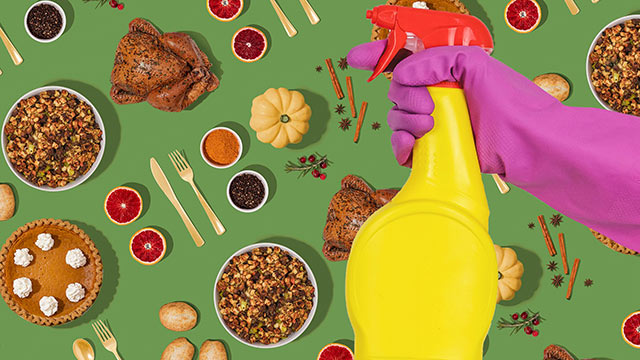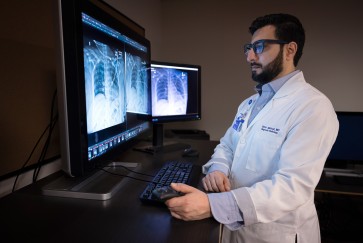As Thanksgiving hosts begin prepping their homes for dinner, a Northwestern University environmental microbiologist would like to remind them to worry more about air than surfaces.

“The coronavirus living on surfaces is a minor transmission route,” said Northwestern’s Erica M. Hartmann. “Cleaning, while well-intentioned, is probably not going to make most indoor gatherings less risky.”
An expert on how microbes such as bacteria and viruses, respond to human-made chemicals, including cleaning products and disinfectants, Hartmann is an assistant professor of environmental engineering in Northwestern’s McCormick School of Engineering.
Evolving understanding of transmission
“At the beginning of the pandemic, there were a lot of unknowns about how SARS-CoV-2 was transmitted. Based on what we know about other diseases, surfaces were a likely suspect for transmission, and initial work confirmed that SARS-CoV-2 — when intentionally placed on a surface — could live for hours or days. This led to cleaning and sanitizing homes and other indoor spaces," Hartmann said.
“While cleaning is a good thing, we have since learned from studying actual surfaces ‘in the wild’ there is not a lot of SARS-CoV-2 and transmission is most likely via air," she added. "This means that no amount of cleaning will make Thanksgiving safe. Instead, we need to be more concerned with attending gatherings with infected people."
Focus on air, not surfaces
“To put it simply: If the source of the virus is sitting across from you at the dining table, it doesn’t matter how thorough or how often you clean that table," Hartmann said. "It’s like trying to prevent typhoid by washing your drinkware instead of treating the contaminated drinking water.”
Hartmann recommends reviewing recent literature on the topic, finding that SARS-CoV-2 is primarily transmitted person-to-person rather than on high-touch indoor surfaces.


